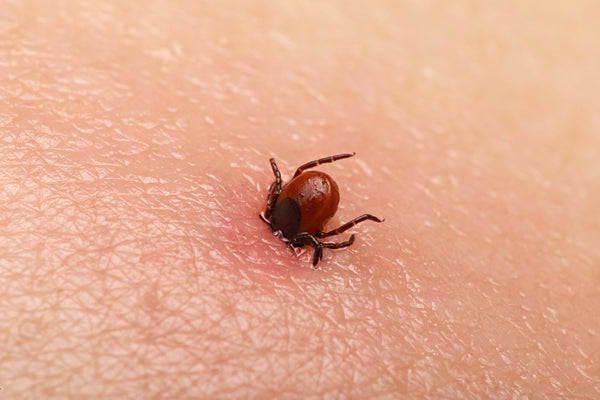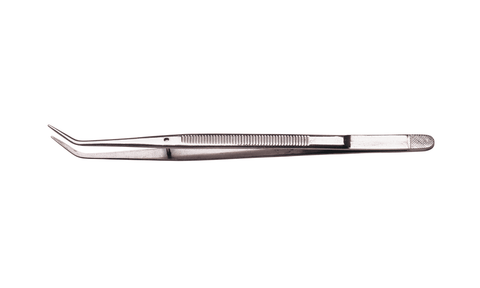How to Remove a Tick

How to remove a tick, expertly explained.
The complete guide to safe tick removal by Tick Proof.
Tick removal is not a breeze, ticks are built by nature to be difficult to dislodge once they have gotten ahold of you. Ticks have a set of special backwards teeth, you could liken them to the type of security gates that will not allow you to back up once you have driven your vehicle over them, if you reverse your automobile, they puncture your tires. In addition to the custom chomping teeth most ticks also deploy a cement like substance that helps them remain attached to their host. This substance is not literally cement strong, but its functionality is like the way we use cement, and it does increase the attacking tick’s overall grasp. Most ticks only have three hosts during their life cycle, one as a larva, one as a nymph, and one as an adult. If a tick has successfully attached to your body, it is not going to want to let go, you are 1/3 of the food for its entire life.
If you find yourself in hot water, with a tick buried under your skin, effective tick removal is critical to mitigating the risk of infection. It is essential that you not only remove the tick as quickly as possible, as the risk of disease transmission escalates in direct correlation with the duration of the attachment, but you must also ensure you do not rush the job and use an improper removal technique, one that will leave portions of the tick still embedded in your body.
Tick Removal Guide Rule #1. Do not panic.
While to a first-time tick bite victim the experience of finding a hard-shelled critter buried under your flesh feeding upon you might be rather terrifying, and often is, a calm head can save you from a serious tick related sickness, it can even save your life. While it is true the longer the tick remains attached to you the greater the statistical possibility of disease transmission, nothing is gained from a hurried anxiety driven removal attempt. Winging it with a haphazard technique can make a bad situation worse, you could end up with the tick’s body gone but head and teeth still buried under your skin, then you have really stepped in it, because the head is way harder to dislodge if there is no body left to pull on. If a tick is already on you the chance of disease transmission literally occurring during the short time required to carefully gather the required items for proper removal is negligible.
Tick Removal Guide Rule #2. Do not use archaic “rumor mill” removal methods.
If you start asking around about how to remove a tick, you are likely to collect recommendations that include methods such as burning them off or suffocating the tick by covering it in petroleum jelly or nail polish. These are incorrect techniques panned by the heath care community, ones not formulated in consideration of disease transmission risk mitigation, old timey methods for killing a tick, not removing one. A dead tick buried in your skin still needs to be removed and burning or suffocating an embedded tick can agitate it, causing it to involuntarily regurgitate more of its stomach’s contents into your bloodstream, increasing the probability you contract any tick-borne disease carried by the offending tick. It is reasonable to presume word of mouth removal methods such as burning or suffocating originate from a point in time when not much was known about ticks, human instinct has always been to kill an attacking insect or arachnid. In modern times science understands the role of the tick in carrying disease to other forms of life, and human beings are strongly encouraged to use one specific means to remove them, the tweezer method explained below.
Tick Removal Guide Rule #2. Find some tweezers.

Almost all medical professionals and the Center for Disease Control agree on what is needed to deploy the safest method of tick removal, tweezers. A tool specially designed for tick removal is equally effective, but you probably would not be reading this if you had one of those. If you do not have tweezers, you will need to go find some. Call friends or family and ask to borrow a pair, knock on a neighbor’s door, and explain your tick situation, it is likely they would be willing to loan you tweezers. A high percentage of people own tweezers, someone living near you most certainly has some, substitute tools are not worth the risk. If you cannot locate a loaner pair of tweezers, go buy some, they are inexpensive and in stock at almost every single drug store, grocery store, dollar store, and big box store.
Tick Removal Guide Rule #3. Be aware of your surroundings.
If you have never removed a tick before, you are really going to be grateful for this tip. Look around, where are you? Are you going to be able to find the tick if you drop it after removal? For a lot of people their instinct after they pull a tick out is to fling it away from their body. You could think of this as “I win”, “get away from me”, and people flick the tick. This error can really let the wind out of your sails as what should be a celebratory tick removal moment takes a turn for the worse as you realize the tick is still alive, hungry, nearby, and you have no idea where it is. If you are camping, we recommend you find a well-lit bathroom with a solid floor, if primitive camping do the removal inside your tent. If you are removing a tick in your home look at the room you are in, hardwood floors are best, or move to the bathroom if you need to. Furthermore, you can defeat the urge to sling the removed tick if you prepare yourself mentally. A tick is not fast, at all, they move about the speed of a ladybug, there is zero possibility of you being instantly bitten a second time by a tick you just removed. If possible, keep the tick pressed in the tweezers with a steady hand and place it in a jar or cup (see Tick Removal Guide Rule #4. Keep the tick.). As long as you anticipate your surroundings and do not throw the tick hard or far outside of your controlled removal area you should be fine, it will be easy to locate on the right surface, and then you can scoop it up.
Tick Removal Process:
Hold your tweezers horizontally, grasping the portion of the tick closest to your skin with the open end of the tweezers. Remember you do not want the ticks stomach contents squeezed into you, the strategy is to firmly grasp the tick, with the tweezers cutting off the tick’s stomach from the neck and head portion, and then slowly and firmly pull upward, popping the neck and head out of your body. Do not twist the tick at all, this could cause it to break apart, just apply controlled upward pressure, increasing the pressure little by little until the tick pops out. It is not going to “release” its grip, at all, expect considerable resistance, you are going to need to use a decent pull strength to get it out.
If you have never removed a tick before the process can be somewhat unsettling, as it is not until you begin to remove a tick that you understand the strength of its grasp.
Apply an antiseptic at the site of the bite, after removal is complete.
Note that special tools designed for tick removal do make the process, in our opinion, somewhat easier than using tweezers. These type of tick removers can usually be found at Walmart, or maybe a drug store. Mom and pop type convenience stores in rural areas popular for outdoor recreational activities often carry them as well. Small stores that sell live fishing bait would be a lead if you were trying to track down a tick remover. They look like a plastic tablespoon with a crosscut in the middle bottom portion of the spoon, or a V cut on the side of the spoon.
Tick Removal Guide Rule #4. Keep the tick.
Try to avoid the desire to smash it or kill it or flush it, keep it alive for testing, if such testing is needed. Put it in a cup with something over the top, a small container, a bag, retain the tick that has bitten you. Have something to place the tick in ready to go before you do the removal. This is an extremely important step because if you begin to experience symptoms of any tick-borne disease, diagnosis can be way faster if you have the tick that bit you. Tick borne disease often mimics the symptoms of other sicknesses and it is not at all a fast and easy process for medical professionals to determine which tick related illness you have contracted, but it is if you have the tick. They can test the tick and know with certainty what disease agents it was carrying. Once you have removed a biting tick practice tick retention, not tick disposal.
Other Acceptable Methods of Removal:
String and Loop Method
If you absolutely cannot locate tweezers, you can try the thread and loop method. Dental floss or thread can be utilized to remove a tick. Take a 6 to 10-inch piece of thread and loop it over itself in the center, as if you were going to tie a knot in the middle of the thread. Do not tie the knot though, place the circular loop over the tick and then tighten it, tying the knot over the tick’s head and neck, the same place you would be grasping with tweezers. Try to get the knot as close to your skin as possible. If you have done this correctly you will have an even length of thread left on both the right and left side of the tick, the tick will be in the center with a knot tied around it. Now take one end of the thread in your right hand and one in your left, use even pressure and pull with both hands simultaneously, pulling away from your body, the tick will pop out. If the tick is on your arm, grab and pull both sides of the string with one hand.
Heath Care Professionals
You can go to an instant care clinic or even the hospital for a tick removal. The health care community is aware of the danger of ticks, nobody is going to say, “why are you here for a tick”? You will not be the first to seek medical attention for a tick, an embedded tick is a serious life-threatening situation. Medical professionals have advanced means to remove a tick, including injections at the site of the bite that can cause the tick to release.
In summary, when it comes to tick removal the Center for Disease Control recommends tweezers, and we are comfortable vouching for the thread and loop method, if no tweezers are available. Bear in mind both acceptable home remedy removal methods rely on your statistical good fortune, if you are going to perform either by yourself. A tick is not always going to be in a spot that is easy to look at visually, they gravitate toward warm, moist parts of the body, including under the groin and that area where the sun does not shine. If you get a tick in one of the worst spots to have one you may need to make a somewhat embarrassing request for assistance, to a partner, friend, or family member. It is hard to remove a tick if you are not looking at it, perhaps you can pull it off yourself with a series of strategically positioned mirrors.
Remember not having to remove a tick is much easier than removing a tick, use Tick Proof, the world’s strongest all-natural tick repellent, and protect yourself, your children, your friends, family, and neighbors.
If you have just suffered your first tick bite and completed the removal process, think back prior to the incident, and compare that point in time to the current moment, your knowledge of ticks has been changed dramatically by the experience. You probably know a lot more than most people at this point. Do you know anyone that is not tick aware? While the medical community and several non-profit organizations have made a major push to raise the nations tick IQ, the United States is not where it should be when it comes to education on the threat of ticks.
Turn your unpleasant tick bite experience into an opportunity to help others, become an advocate for tick safety, tick checks, and the use of tick repellent.
Give a bottle of Tick Proof as a gift, not everyone is going to be informed enough to proactively seek out a tick repellent to buy, but they might use it if given to them.
